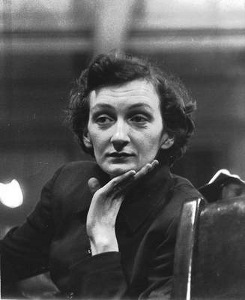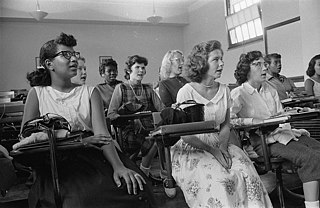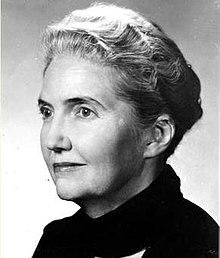
The civil rights movement was a political movement and campaign from 1954 to 1968 in the United States to abolish institutional racial segregation, discrimination, and disenfranchisement throughout the United States. The movement had its origins in the Reconstruction era during the late 19th century, although it made its largest legislative gains in the 1960s after years of direct actions and grassroots protests. The social movement's major nonviolent resistance and civil disobedience campaigns eventually secured new protections in federal law for the civil rights of all Americans.
Brown v. Board of Education of Topeka, 347 U.S. 483 (1954), was a landmark U.S. Supreme Court decision in which the Court ruled that U.S. state laws establishing racial segregation in public schools are unconstitutional, even if the segregated schools are otherwise equal in quality. The decision partially overruled the Court's 1896 decision Plessy v. Ferguson, which had held that racial segregation laws did not violate the U.S. Constitution as long as the facilities for each race were equal in quality, a doctrine that had come to be known as "separate but equal". The Court's decision in Brown paved the way for integration and was a major victory of the civil rights movement, and a model for many future impact litigation cases.

Race-integration busing in the United States was the practice of assigning and transporting students to schools within or outside their local school districts in an effort to diversify the racial make-up of schools. While the 1954 U.S. Supreme Court landmark decision in Brown v. Board of Education declared racial segregation in public schools unconstitutional, many American schools continued to remain largely uni-racial due to housing inequality. In an effort to address the ongoing de facto segregation in schools, the 1971 Supreme Court decision, Swann v. Charlotte-Mecklenburg Board of Education, ruled that the federal courts could use busing as a further integration tool to achieve racial balance.

In American politics, the Southern strategy was a Republican Party electoral strategy to increase political support among white voters in the South by appealing to racism against African Americans. As the civil rights movement and dismantling of Jim Crow laws in the 1950s and 1960s visibly deepened existing racial tensions in much of the Southern United States, Republican politicians such as presidential candidate Richard Nixon and Senator Barry Goldwater developed strategies that successfully contributed to the political realignment of many white, conservative voters in the South who had traditionally supported the Democratic Party. It also helped to push the Republican Party much more to the right relative to the 1950s.
Racial equality is a situation in which people of all races and ethnicities are treated in an egalitarian/equal manner. Racial equality occurs when institutions give individuals legal, moral, and political rights. In present-day Western society, equality among races continues to become normative. Prior to the early 1960s, attaining equality was difficult for African, Asian, and Indigenous people. However, in more recent years, racial equality has become part of laws generally ensuring that all individuals receive equal opportunities in treatment, education, employment, and other areas of life.

Racial integration, or simply integration, includes desegregation. In addition to desegregation, integration includes goals such as leveling barriers to association, creating equal opportunity regardless of race, and the development of a culture that draws on diverse traditions, rather than merely bringing a racial minority into the majority culture. Desegregation is largely a legal matter, integration largely a social one.
Massive resistance was a strategy declared by U.S. Senator Harry F. Byrd Sr. of Virginia and his brother-in-law James M. Thomson, who represented Alexandria in the Virginia General Assembly, to get the state's white politicians to pass laws and policies to prevent public school desegregation, particularly after Brown v. Board of Education. Many schools, and even an entire school system, were shut down in 1958 and 1959 in attempts to block integration, before both the Virginia Supreme Court and a special three-judge panel of Federal District judges from the Eastern District of Virginia, sitting at Norfolk, declared those policies unconstitutional.
This is a timeline of African-American history, the part of history that deals with African Americans.

Segregation academies are private schools in the Southern United States that were founded in the mid-20th century by white parents to avoid having their children attend desegregated public schools. They were founded between 1954, when the U.S. Supreme Court ruled that segregated public schools were unconstitutional, and 1976, when the court ruled similarly about private schools.

Anne McCarty Braden was an American civil rights activist, journalist, and educator dedicated to the cause of racial equality. She and her husband bought a suburban house for an African American couple during Jim Crow. White neighbors burned crosses and bombed the house. During McCarthyism, Anne was charged with sedition. She wrote and organized for the southern civil rights movement before violations became national news. Anne was among nation's most outspoken white anti-racist activists, organizing across racial divides in environmental, women's, and anti-nuclear movements.

Johnnie Rebecca Daniels Carr was a leader in the Civil Rights Movement in the United States from 1955 until her death.

The Jim Crow laws were state and local laws enforcing racial segregation in the Southern United States. Other areas of the United States were affected by formal and informal policies of segregation as well, but many states outside the South had adopted laws, beginning in the late 19th century, banning discrimination in public accommodations and voting. Southern laws were enacted in the late 19th and early 20th centuries by white Southern Democrat-dominated state legislatures to disenfranchise and remove political and economic gains made by African Americans during the Reconstruction period. Jim Crow laws were enforced until 1965.

Black schools, also referred to as "colored" schools, were racially segregated schools in the United States that originated after the American Civil War and Reconstruction era. The phenomenon began in the late 1860s during Reconstruction era when Southern states under biracial Republican governments created public schools for the formerly enslaved. They were typically segregated. After 1877, conservative whites took control across the South. They continued the black schools, but at a much lower funding rate than white schools.
The Pearsall Plan to Save Our Schools, known colloquially as the Pearsall Plan, was North Carolina's 1956 attempt at a delayed approach to integrate their public schools after racial segregation of schools was ruled unconstitutional by the United States Supreme Court ruling Brown v. Board of Education (1954). Many southern states were challenged by the Brown ruling as they faced opposition to integration from residents.

School segregation in the United States is the separation of students based on their race. This has taken two forms, legally mandated segregation (historically), and segregation in fact. In the United States, public schools are primarily a U.S. state and local matter, not a national matter, and historically, public school systems in parts of the United States were racially segregated by law. All such laws were overturned in the 1950s and 1960s, but for a variety of reasons racial concentrations continue in many areas. Currently more than half of all students in the United States attend school districts with high racial concentrations and about 40% of black students attend schools where 90%-100% of students are non-white. Contemporary school racial segregation is most noticeable in California and New York.

School integration in the United States is the process of ending race-based segregation within American public and private schools. Racial segregation in schools existed throughout most of American history and remains an issue in contemporary education. During the Civil Rights Movement school integration became a priority, but since then de facto segregation has again become prevalent.
This is a timeline of the civil rights movement in the United States, a nonviolent mid-20th century freedom movement to gain legal equality and the enforcement of constitutional rights for people of color. The goals of the movement included securing equal protection under the law, ending legally institutionalized racial discrimination, and gaining equal access to public facilities, education reform, fair housing, and the ability to vote.
Thomas Jerome Sellers, was an African American journalist, newspaper editor, newspaper publisher, and educator from Charlottesville, Virginia.
Prior to the civil rights movement in South Carolina, African Americans in the state had very few political rights. South Carolina briefly had a majority-black government during the Reconstruction era after the Civil War, but with the 1876 inauguration of Governor Wade Hampton III, a Democrat who supported the disenfranchisement of blacks, African Americans in South Carolina struggled to exercise their rights. Poll taxes, literacy tests, and intimidation kept African Americans from voting, and it was virtually impossible for someone to challenge the Democratic Party, which ran unopposed in most state elections for decades. By 1940, the voter registration provisions written into the 1895 constitution effectively limited African-American voters to 3,000—only 0.8 percent of those of voting age in the state.
Constance Winifred Curry was an American civil rights activist, educator, and writer. A longtime opponent of racial discrimination, she was the first white woman to serve on the executive committee of the Student Nonviolent Coordinating Committee (SNCC).










